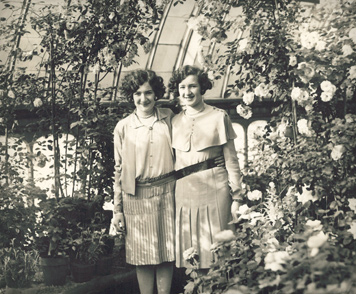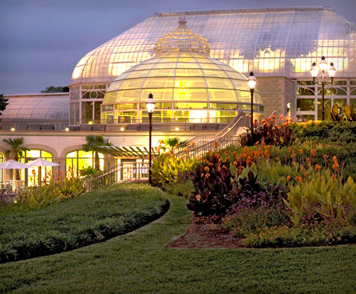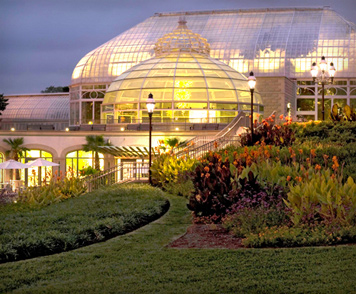 This is not your grandmother’s flower house.Photo: c/o Phipps ConservatoryThe Phipps Conservatory in Pittsburgh is the kind of place your grandmother would have loved. You know the routine — the spring tulip show, a whole room full of orchids, 5,000 varieties of rosebush. Housed in a classic Victorian glass house, it’s the kind of place you’d think would’ve sunk into the swamp long ago. But it hasn’t.
This is not your grandmother’s flower house.Photo: c/o Phipps ConservatoryThe Phipps Conservatory in Pittsburgh is the kind of place your grandmother would have loved. You know the routine — the spring tulip show, a whole room full of orchids, 5,000 varieties of rosebush. Housed in a classic Victorian glass house, it’s the kind of place you’d think would’ve sunk into the swamp long ago. But it hasn’t.
In the past decade, Phipps has set out to become a leader in the green building movement. The conservatory built a LEED silver-certified visitors center and a new tropical forest conservatory tricked out with “earth tubes” and “energy blankets” that help maintain equatorial temperatures through the depths of Steel City winters. Phipps, remembered fondly for its jungle-like interior by generations of school kids, also hosts all manner of conservation-oriented classes and conferences.
That’s right kids, no flowery hat required. These folks are up with the times.
 Photo: c/o Phipps ConservatoryPhipps’ latest project — the Center for Sustainable Landscapes, an educational center that should be finished in spring of 2012 — goes even further. LEED platinum? Got that covered, says the conservatory’s executive director, Richard Piacentini. He’s also gunning for certification under the Living Building Challenge, which requires, among other things, that the structure produce all its own electricity and use only water that is gathered on site.
Photo: c/o Phipps ConservatoryPhipps’ latest project — the Center for Sustainable Landscapes, an educational center that should be finished in spring of 2012 — goes even further. LEED platinum? Got that covered, says the conservatory’s executive director, Richard Piacentini. He’s also gunning for certification under the Living Building Challenge, which requires, among other things, that the structure produce all its own electricity and use only water that is gathered on site.
To top it off, the center is also a pilot for the Sustainable Sites Initiative, designed to be a LEED system for landscapes. “We’ll have a permaculture demonstration garden on the roof,” Piacentini says. “Everything else will be native plants.”
His next challenge: Upgrading the original glass house. The structure, inspired by the City Beautiful movement, was donated to the city by Henry Phipps, one of Andrew Carnegie’s business partners. Built in 1893, it leaks heat like a sieve in the wintertime, as you might imagine. Piacentini wants to take it off the grid.
Nice, but what about all that exotic greenery still sprouting from the conservatory grounds? How eco-friendly is that?
Piacentini says Phipps has gotten rid of the species that require gobs of pesticides and other chemicals. The rose garden is gone. Still, he says, the conservatory is first and foremost about plants — including ones that don’t necessarily belong there.
“Most people come to Phipps to see flower shows,” Piacentini says. “They come for inspiration, to relax. We’ve been very careful with the way that we’ve framed our environmental message. The last thing you want to is make them feel guilty.”



